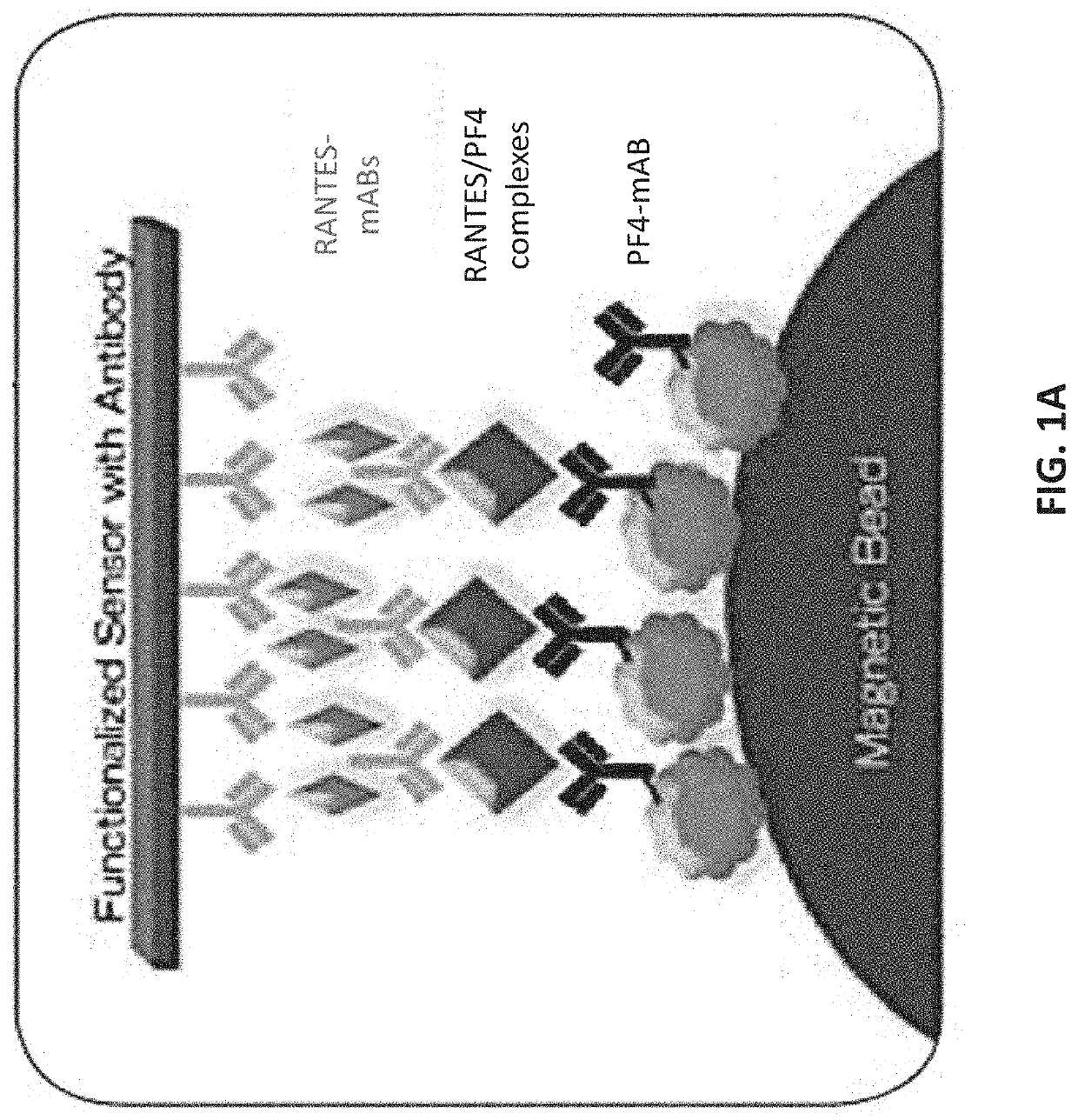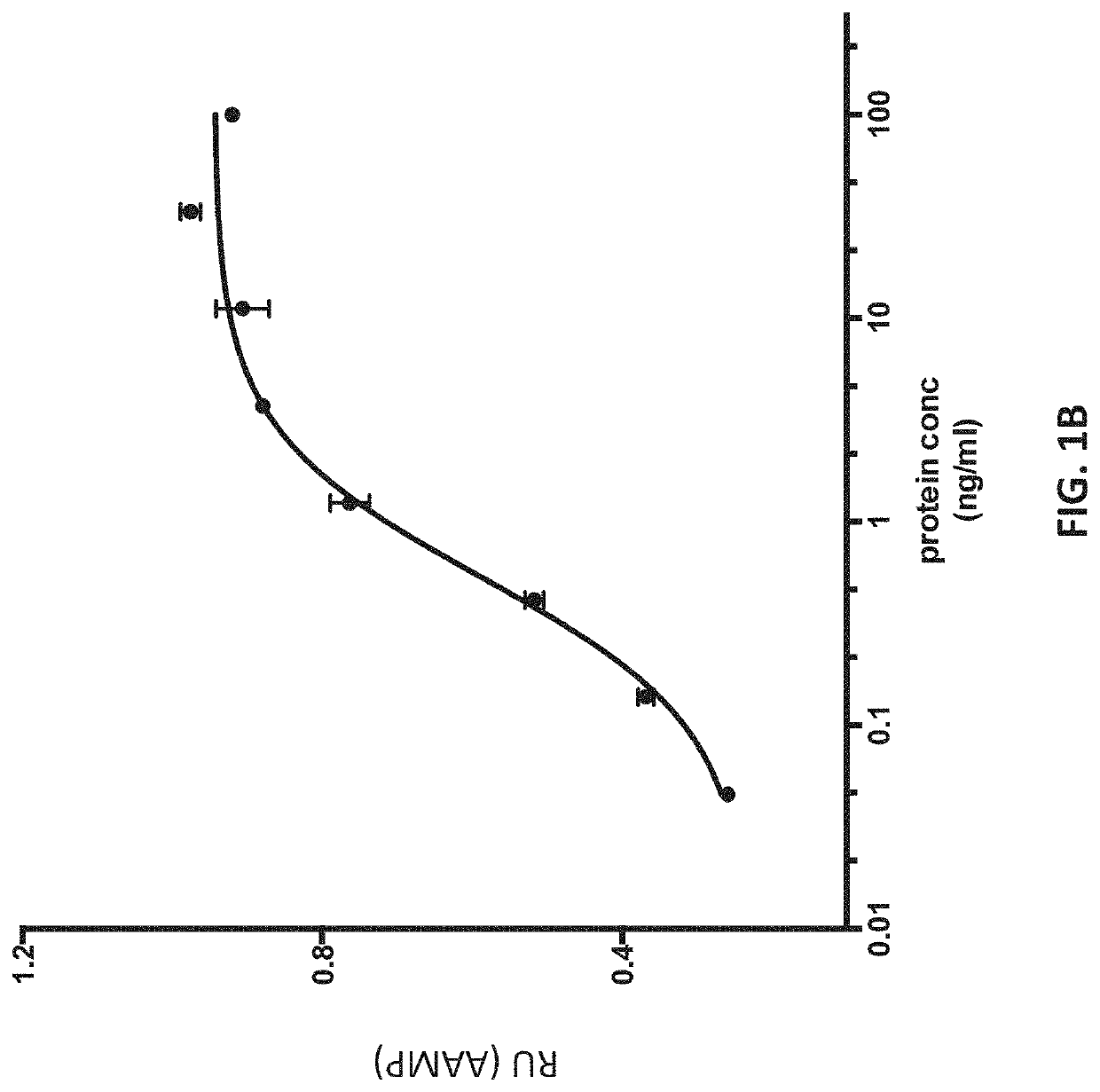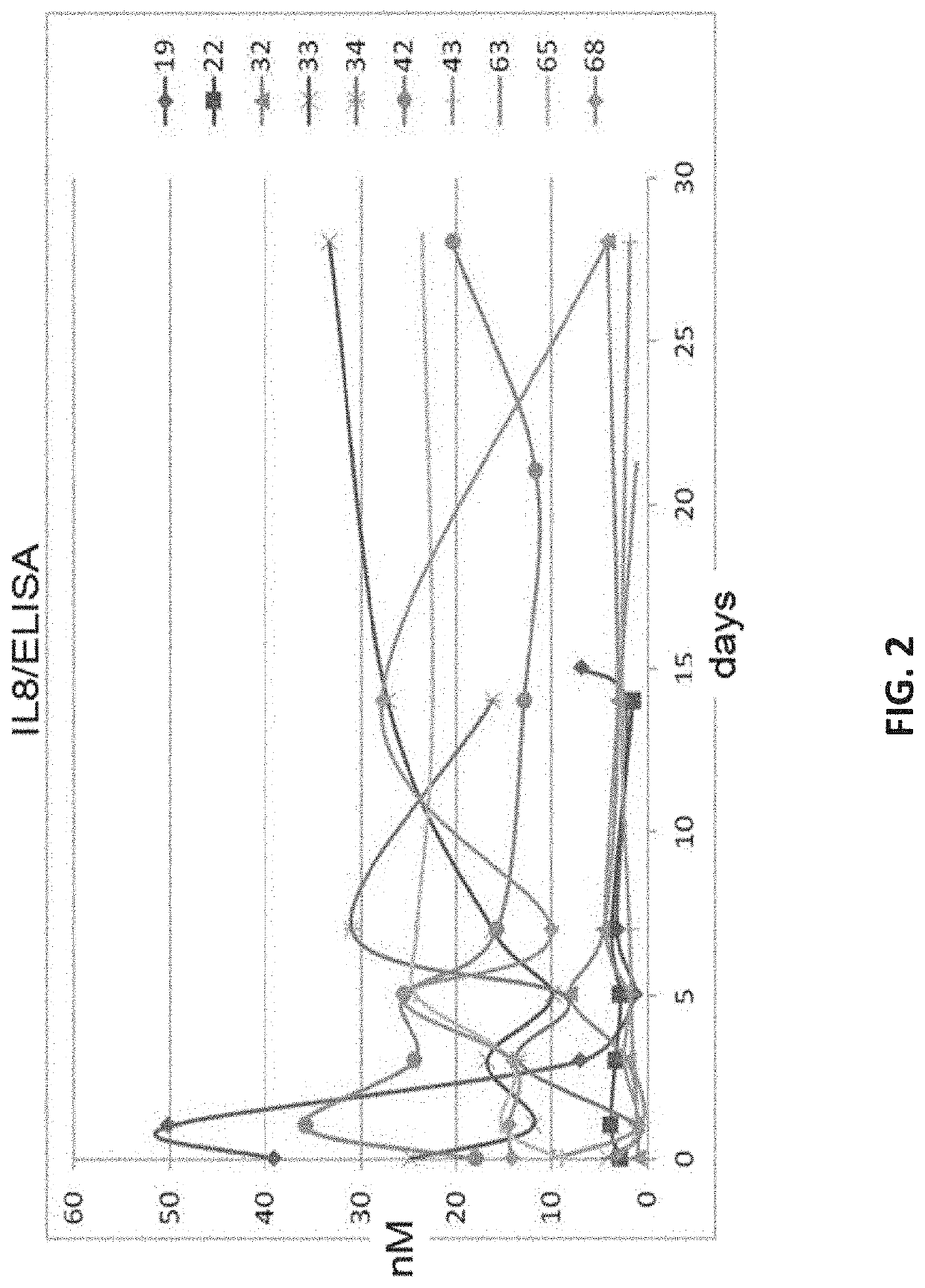Biomarker combinations for monitoring chronic obstructive pulmonary disease and/or associated mechanisms
a technology of chronic obstructive pulmonary disease and biomarker combinations, which is applied in the direction of biological material analysis, instruments, measurement devices, etc., can solve the problems of copd exacerbation frequency and severity, high utilization of healthcare resources, and loss of productivity and especially hospitalizations
- Summary
- Abstract
- Description
- Claims
- Application Information
AI Technical Summary
Benefits of technology
Problems solved by technology
Method used
Image
Examples
example 1
ation of a Biomarker Signature for Monitoring and Predicting Progression of Chronic Obstructive Pulmonary Disease (COPD)
[0188]Sputum was collected over multiple days post-index identification (i.e., post-hospital admission for exacerbation) and tested for a response associated with an exacerbation. The raw untreated sputum was frozen at −80 C as collected. Prior to measurement, the sputum samples were processed for measurement as follows: Frozen sputum samples were scraped out of the specimen container using a sterile metal sample paddle and weighed in a pre-weighed sterile Eppendorf tube on an analytical balance. ˜10 mg of sputum was suspended in 400 μl of the AMMP® assay buffer and vortexed vigorously for 5 minutes, followed by a 5 minute centrifugation at 4° C. The supernatant was transferred to and retained in a pre-labeled tube. The protein content of clarified sputum was quantified using a Quick Start™ Protein Quantification Kit (BioRad) and normalized to 1 mg / ml protein prior...
example 2
s Measured in a First Exploratory Cohort of COPD Patients Versus Non-COPD Diagnosed Controls with and without Smoking History
[0196]In this example, molecular marker data was measured on a cohort of moderate COPD patients versus non-COPD diagnosed controls with and without smoking history (i.e., otherwise stable patients that are not exacerbating) using a combination of both AMMP® and ELISAs constructed for particular markers. The samples were plasma with anticoagulant EDTA, separated, frozen and stored at −80° C. for subsequent analysis.
[0197]In addition to molecular markers, clinical markers such as quantitative Low Attenuation Area Computed Tomography (<950 Hounsfield Units, inspiratory) (CT-LAA), lung function tests such as a ratio of Forced Expiratory Volume in 1 second to Forced Vital Capacity (FEV1 / FVC) and Forced Expiratory Volume in 1 second percent predicted (FEV1% pred), that is relative to age-related loss of lung function, and diffusing capacity for the lungs for carbon ...
example 3
s Measured in a Second, Nine Site Clinic Based Cohort of COPD Patients and Non-COPD Diagnosed Controls
[0208]In this example, molecular marker data was measured on a large cohort (514), including all stages of COPD diagnosed patients (414) and non-COPD controls (100). Subjects had varying clinical history including COPD exacerbations reported in the past 12 months, 6 months, and 1 month. Biomarkers were measured using a combination of both AMMP® and ELISA assays constructed for particular markers. The samples were plasma with anticoagulant EDTA, separated, frozen and stored for subsequent analysis.
[0209]In addition to molecular markers, clinical markers such as lung function tests, such as a ratio of Forced Expiratory Volume in 1 second to Forced Vital Capacity (FEV1 / FVC) and Forced Expiratory Volume in 1 second percent predicted (FEV1% pred), that is relative to age-related loss of lung function were also known. The lung function tests were gathered from subject medical history with...
PUM
| Property | Measurement | Unit |
|---|---|---|
| time | aaaaa | aaaaa |
| time | aaaaa | aaaaa |
| time | aaaaa | aaaaa |
Abstract
Description
Claims
Application Information
 Login to View More
Login to View More - R&D
- Intellectual Property
- Life Sciences
- Materials
- Tech Scout
- Unparalleled Data Quality
- Higher Quality Content
- 60% Fewer Hallucinations
Browse by: Latest US Patents, China's latest patents, Technical Efficacy Thesaurus, Application Domain, Technology Topic, Popular Technical Reports.
© 2025 PatSnap. All rights reserved.Legal|Privacy policy|Modern Slavery Act Transparency Statement|Sitemap|About US| Contact US: help@patsnap.com



